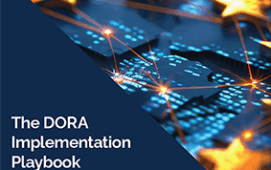By Chris Pickles, Co-Chair of FIX Trading Community’s Reference Data Subgroup and Member of the Bloomberg Open Symbology Team
Reference data is not only a foundation of data management, it is also a revenue earning commodity, particularly for exchanges and issuers of ISINs. MiFIR requires exchanges, multilateral trading facilities, organised trading facilities and systematic internalisers to deliver defined reference data to national regulators for every financial instrument that is admitted to trading on their venue. It doesn’t matter if the instrument ever trades on that venue; if it is admitted to trading, the reference data has to be delivered.
A first surprise about ESMA’s approach to reference data was its decision to mandate the use of ISINs alone for transaction reporting, particularly after ESMA itself made it clear that it understood that ISINs aren’t widely used by the industry for instruments such as derivatives. Also, ISINs are often fee liable in one form or another.
ESMA has now delivered a second surprise by clarifying that it will be making all of the reference data available via its website, not only to national regulators in the European Union, but to the whole world.
The reference data in question generally has ownership rights and/or intellectual property rights attached to it. It is created by issuers, trading venues and domestic numbering agencies, and it is licensed to users and vendors either on its own or within packages of data. ESMA has said MiFIR requires ESMA to publish all of this reference data and that ‘publish’ means ‘to everyone’. But MiFIR does not say that ESMA has to take and give away all of the data for free, which is particularly relevant when it belongs to other parties.
Both MiFID I and MiFID II require investment firms to publish trade data, but allow them to do so on a ‘reasonable commercial basis’. ESMA is not making it clear if, and how, it intends to address this same issue for reference data, in terms of licensing, fee liability, access control, billing and revenue sharing.
Subscribe to our newsletter




